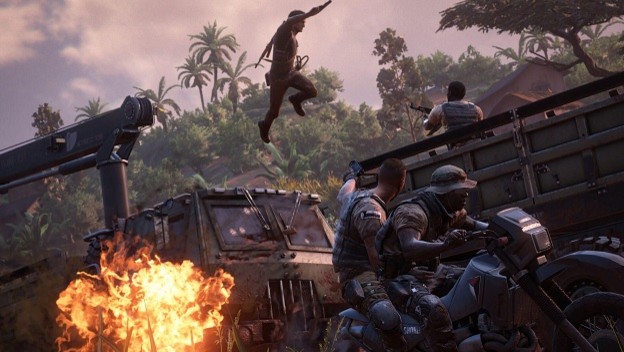Game development is tough. Like, really tough. There’s a an entire spectrum of art and discipline embodied in the teams, big and small, that create the games that we love to play. Story, gameplay mechanics, design, art, animation, programming, sound design, voice acting, motion capture, music, debugging, play testing, marketing, production, distribution… There are so many moving parts.
The idea that a team of artists and a team of programmers can all give each other high-fives and then bang out a great game in a year or two is totally unrealistic. In fact, I don’t think it’s fair to assume that larger teams working with AAA budgets from the likes of Sony and EA can create the games we want within the commonly allotted development cycles. We want more than they can give, and something needs to change: either our expectations or their deadlines.
Just think about what you’d expect from the next Assassin’s Creed , for example. I assume we all expect a lengthy campaign that lasts a minimum of 20-25 hours. Obviously we expect it to look better than the Assassin’s Creed games that came before it. We’ll need compelling new characters who are fully voiced and tell us an amazing story. When the single-player mode ends we’ll demand a multiplayer mode or additional DLC to make our purchase worth it. Since Ubisoft is taking the year off, we expect this game no later than 2017. Sounds pretty reasonable, doesn’t it? Except it’s not.
Developers are breaking their backs to crank out these enormous games in record time. Amy Hennig spent over a decade making games at Naughty Dog, and she knows exactly what that crunch looks like. “The whole time I was at Naughty Dog – ten-and-a-half years – I probably, on average, I don’t know if I ever worked less than 80 hours a week,” she said in an interview with Idle Thumbs’ Designer Notes podcast. “There were exceptions where it was like, ‘Okay, let’s take a couple of days off,’ but I pretty much worked seven days a week, at least 12 hours a day.”
That sounds pretty extreme, and Hennig was an executive, but she noted that the entire team was under a similar load. It wasn’t healthy, and it destroyed some peoples’ lives. “There’s people who never go home and see their families. They have children who are growing up without seeing them,” she said.”I mean, my health really declined, and I had to take care of myself, because it was, like, bad. And there were people who, you know, collapsed, or had to go and check themselves in somewhere when one of these games were done. Or they got divorced. That’s not okay, any of that. None of this is worth that.”

Hennig stated very plainly that the industry has to figure out how to find a balance. When asked if making AAA games like Uncharted 2 & 3 were worth it in the end, she responded in the negative. She likened the constant rise of consumer and publisher demand and corresponding rise of developer crunch to an unwinnable arms race, and I agree with her. At some point, we have to open our eyes and realize that not every game has to have every feature.
Not every RPG has to be an 80-hour epic. Not every single-player game needs a complimentary multiplayer mode. Not every shooter has to come with a season pass entitling us to a suite of DLC for the next year until the next sequel is released. Our current development model isn’t sustainable, and something has to give.
Hennig noted that a game like Uncharted 1 – a 10-hour game with no other modes – wouldn’t be funded or made these days. What can we do in order to communicate to publishers that we’re okay with smaller games or longer development cycles? Is that even true? Would you be willing to wait 4 years for the next Assassin’s Creed? Would you be okay with a Black Ops game that didn’t have a zombie mode? Is it up to us to temper our expectations, or is it up to publishers to fund larger studios?
